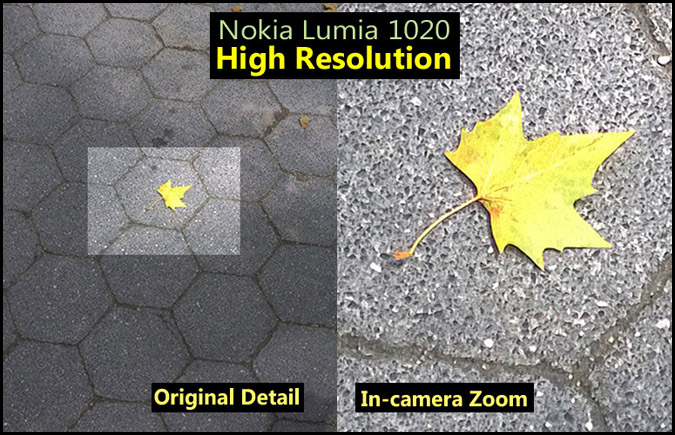Nokia Lumia 1020 - Game Changer Award Winner 2013
It sounds like a cliché, but one of the biggest leaps in smartphone camera technology was originally sketched out on a napkin.
Back in 2007, Nokia engineers Eero Salmelin and Juha Alakarhu were struggling to come up with a way to cram a zoom lens into a smartphone's body. At the time, Nokia's flagship smartphone cameras, the N93 and N93i, which both featured a 3x optical zoom, were bulky affairs.
"It was really difficult to make an optical zoom with high performance in a mobile phone size," said Alakarhu, who is now Nokia's head of digital imaging. "You end up having clumsy, slow mechanics to zoom in and out."
MORE: 10 Amazing Pictures Taken with the Nokia Lumia 1020
Over a few beers in a Tokyo bar, the engineers stumbled on an idea that was as elegant as it was practical. You didn't need a larger lens, just a larger sensor.
By placing a 41-megapixel sensor in a camera, users could take a photo, then using a technology called oversampling, effectively "zoom" in to a particular section. That area's resolution would still be as high (if not higher) than that produced by most other smartphone cameras.
But there's a long way to go from a napkin to a finished product. For one thing, smartphones did not yet have the power required to process all the data from a 41-MP sensor. "The computational power requirement was one of the big challenges," Alakarhu said.
Sign up to receive The Snapshot, a free special dispatch from Laptop Mag, in your inbox.
And the engineers still faced the issue of fitting the sensor, more than four times larger than a typical smartphone's camera, into something that would be easily pocketable.
Five years later, in 2012, Nokia took its first crack with the 808 PureView, which was not only the first camera with a 41-MP sensor, but the first to use oversampling. However, weighing 6 ounces and measuring nearly three-quarters of an inch thick, the handset was a bit cumbersome, and it also ran the outdated Symbian operating system. In fact, it was the last Nokia phone to run this OS. Also in 2012, Nokia introduced the Lumia 920, the company's first cameraphone to use optical image stabilization.
In the Lumia 1020, "we wanted to combine those technologies, oversampling with optical image stabilization," Alakarhu said. Indeed, in LAPTOP Magazine's review, we found the 1020 took some of the best pictures ever from a smartphone.
Will other smartphone makers follow Nokia's lead? To date, alternatives have been less than practical. Samsung's Galaxy Zoom packs a 10x optical zoom lens onto the back of a phone, but the resulting device is way too large for a pants pocket. Sony's strap-on QX10 lens let you use any smartphone you want, but requires the extra step of attaching yet another bulky device.
MORE: Nokia Lumia 1020 vs. Galaxy S4 Zoom—The Best Camera Phone Is…
In the meantime, Alakarhu continues to refine the algorithms and software that run on the 1020, making adjustments based on user feedback. A major update in the fall of 2013 streamlined the camera apps, making it possible to switch from a fully automatic mode to manual without opening a second app. Plus, the Lumia can now save images in RAW format, delighting professional photographers everywhere.
In early 2014, another tweak to the algorithms controlling the 1020's sensor will enable the cameraphone to better prioritize details in bright conditions and noise reduction in low-light situations.
But Nokia isn't stopping with the 1020. The company also introduced the Lumia 1520, which uses a 20-MP sensor with oversampling in a thinner, 0.34-inch form factor (the 1020 is 0.41 inches thick) and a larger, 6-inch, 1080p display.
As to that fateful 2007 night in Tokyo? While the original napkin was lost to the trash bin, Alakarhu had enough prescience to snap a photo of it. "We were not too drunk," he said.
Game Changer Award Winners 2013
SMARTPHONE: Motorola Moto X
The Moto X is the first smartphone that lets you perform voice commands without touching your device.
TABLET: Amazon Kindle Fire HDX
Amazon has reinvented tech support with the Mayday button on its new tablet.
GAMING: Oculus Rift
This jaw-dropping virtual reality gaming headset literally puts you inside the action.
WEARABLE TECH: Google Glass
A wearable breakthrough, Glass lets you snap pictures, get directions, speak to text and a whole lot more.
PC PERIPHERAL: Leap Motion
Leap Motion can read your hand gestures for doing everything from gaming to exploring the universe.
CARRIER: T-Mobile
T-Mobile has shaken up the wireless world by nixing contracts and making phone upgrading easy.
SMARTWATCH: Pebble
Pebble is taking smartwatches mainstream with an e-paper display, useful apps and a low price.
APP: Vine
Vine is a whole new way to communicate and tell stories via 6-second videos that are a cinch to share.
ENABLING TECHNOLOGY: Intel Bay Trail
Intel's powerful but efficient new CPU gives 2-in-1 tablets and laptops more speed and battery life.
Michael was the Reviews Editor at Laptop Mag. During his tenure at Laptop Mag, Michael reviewed some of the best laptops at the time, including notebooks from brands like Acer, Apple, Dell, Lenovo, and Asus. He wrote in-depth, hands-on guides about laptops that defined the world of tech, but he also stepped outside of the laptop world to talk about phones and wearables. He is now the U.S. Editor-in-Chief at our sister site Tom's Guide, where he oversees all evergreen content and the Homes, Smart Home, and Fitness/Wearables categories for the site..




